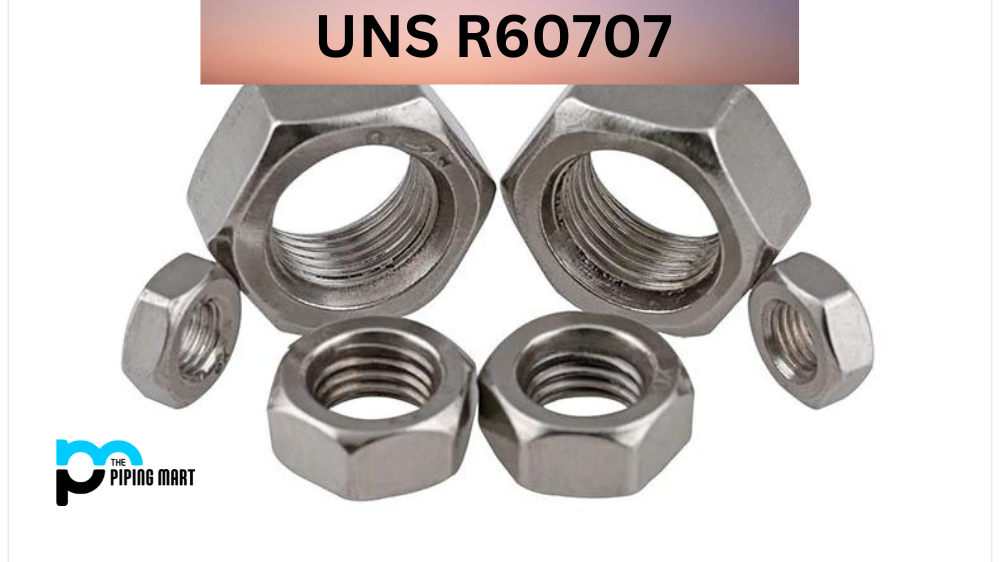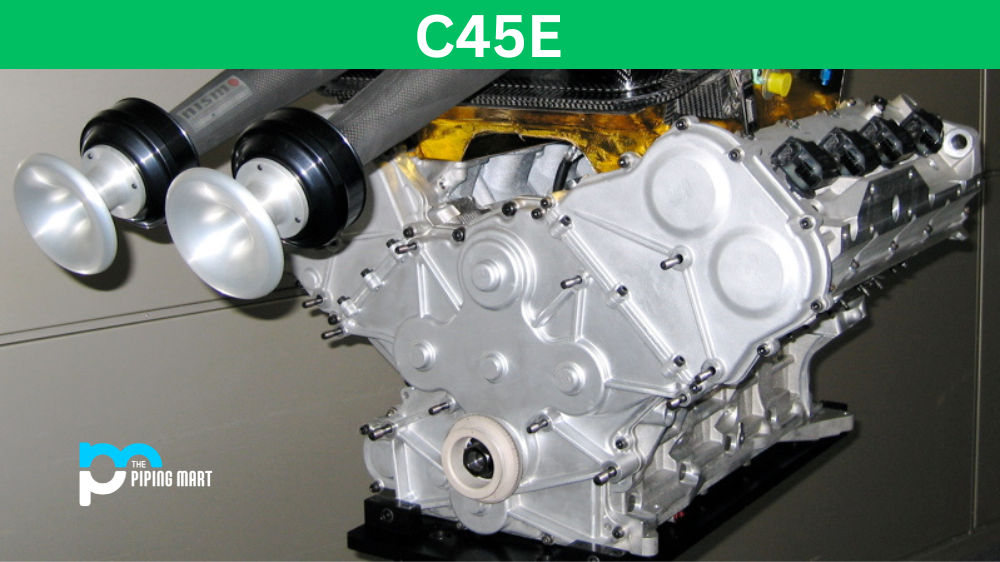UNS R60707 is a high-strength, titanium-based alloy widely used in various aerospace, chemical processing, and marine engineering industries. It is known for its excellent corrosion resistance, mechanical properties, and high-temperature strength. This blog post will discuss the composition, physical and mechanical properties, uses, hardness, heat treatment, welding, and corrosion resistance of UNS R60707.
R60707 Composition
UNS R60707 is a titanium-based alloy that contains around 6% aluminium and 4% vanadium. It also contains around 0.2% iron, 0.25% oxygen, and trace amounts of other elements such as carbon and nitrogen. The alloy is known for its excellent corrosion resistance, especially in saltwater and high-temperature environments.
R60707 Physical Properties
UNS R60707 has a 4.51 g/cm³ density and a melting point of around 1650°C. The thermal expansion coefficient of the alloy is relatively low and has a high electrical conductivity. The alloy is also flexible and can be easily shaped and formed using conventional techniques.
R60707 Mechanical Properties
UNS R60707 is a high-strength alloy that exhibits excellent mechanical properties. It has a tensile strength of around 860 MPa and a yield strength of around 790 MPa. The alloy also has a high hardness of around 340 HB and excellent fatigue properties. It can withstand high-stress environments and exhibits good creep resistance.
R60707 Uses
UNS R60707 is widely used in various industries, such as aerospace, marine engineering, and chemical processing. It is commonly used to manufacture aircraft engine components such as compressor blades and fan blades. Due to its excellent corrosion-resistant properties, the alloy also manufactures marine propellers and pumps.
R60707 Hardness
UNS R60707 has a high hardness of around 340 HB, making it suitable for high-wear applications. It can withstand high temperatures without losing its hardness and exhibits excellent resistance to deformation.
R60707 Heat Treatment
UNS R60707 can be heat treated to improve its mechanical properties. Annealing can be used to increase the flexibility and toughness of the alloy, while solution treatment and ageing can be used to increase its strength and hardness. The heat treatment can also improve the alloy’s fatigue properties and corrosion resistance.
R60707 Welding
UNS R60707 can be readily welded using conventional welding techniques such as gas tungsten arc welding (GTAW) and gas metal arc welding (GMAW). The alloy exhibits excellent weldability and can quickly join itself or other materials. However, it is important to avoid overheating the alloy during welding as it can lead to the formation of brittle phases.
R60707 Corrosion Resistant
UNS R60707 is known for its excellent corrosion resistance, especially in saltwater and high-temperature environments. It exhibits good resistance to pitting and crevice corrosion and can withstand exposure to oxidizing and reducing environments. The alloy is also resistant to various chemical attacks, making it suitable for multiple chemical processing applications.
Conclusion
UNS R60707 is a high-strength, titanium-based alloy with excellent mechanical properties and corrosion resistance. Due to its excellent properties, it is widely used in various industries, such as aerospace, marine engineering, and chemical processing. The alloy can be easily shaped and formed using conventional techniques and heat treatment to improve its properties. It can also be easily welded and exhibits good resistance to corrosion and chemicals. Overall, UNS R60707 is a versatile material that can be used in many applications requiring high strength and corrosion resistance.
Meet Heer, a dynamic and driven writer learning tricks of her trade in the metal industry. With a background in Digital Marketing, Heer brings a unique perspective to her writing, sharing valuable insights. Apart from blogging she like reading and hiking.




